New Ford Bronco Vs Jeep Wrangler: How Does It Stack Up?

With two modern engines and six new trims, the 2021 Bronco seems ready to dethrone the Jeep Wrangler.
Jeep and Ford spent much of the late 20th century in a tug-of-war for off-roading supremacy. The models had changed names, shapes, and sizes but the fight remained. It seemed that when the Ford Bronco went out of production in 1996, the battle was won. Since then, the Jeep Wrangler has been the first—and realistically—the only domestic choice of vehicle for rock crawlers and river forders. But now that has changed. The 2021 Ford Bronco has the Jeep Wrangler square in its sights and attempts to square off with the Jeep in every trim and feature offered. But to Jeep’s credit, the Bronco will face an uphill battle against the legacy and loyalty garnered by Jeep over the last 25 years as the premier off-roader in North America. So how does the new 2021 Bronco fair against its chief rival? Let’s get to it.
Powertrain
performance | Jeep Wrangler | Ford Bronco |
|---|---|---|
engine | 3.6L V6 / 2.0L I4 Turbo / 3.0L Diesel / 2.0L plug-in hybrid / 6.4L V8 | 2.3L I4 Turbo/ 2.7L Twin-turbo V6 |
horsepower | 285 / 270 / 260 hp / 375 / 470 | 270 / 310 hp |
torque | 260 / 295 / 442 / 470 / 470 lb-ft | 310 / 400 lb-ft |
transmission | six-speed manual / eight-speed automatic | seven-speed manual (6+1 crawler) / 10-speed automatic |
mpg | 20/24/20 (2-door), 19/24/21 (4-door) / 22/24/23 (2-door), 21/24/22 (4-door) / 22/29/25 (4-door only)/49 MPGe (4-door only), 13/17/14 (4-door only) | 20/22/21 (2.3 AT/MT), 18/20/19 (2.7 AT), 18/18/18 (2.3 AT, Sqtch, Blk Dmnd), 17/19/18 (2.3 MT, Blk Dmnd), 18/17/17 (2.3 AT Bdlnds), 17/18/17 (2.7 AT Bdlnds), 17/17/17 (2.7 AT, Sqtch), 16/18/17 (2.3 MT Bdlnds) |
towing rating | 3,500 lb | 3,500 lb |
Ford Bronco: Two engines make up the Bronco lineup. And if the engine lineup is anything to go by, it seems clear that Ford is slowly but surely moving away from the old adage of no replacement for displacement. It is instead focusing on smaller capacity turbo engines to do the heavy lifting. It will offer the smaller 2.3-liter inline-four EcoBoost as standard on most trims. Despite the relatively small engine size, it makes 270 hp—just 15 hp short of the Pentastar V6—and 310 lb-ft of torque, which is 50 lb-ft over the Jeep V6 and 15 lb-ft more than the Jeep’s 2.0-liter turbo.
The other engine is the 2.7-liter V6, making 310 hp and 440 lb-ft of peak torque. It is optional on all trims, even the Base. That said, it’s standard on Badlands, Wildtrak and the First edition trims. For the purist, there is the seven-speed manual gearbox with six forward gears and one crawler gear—but it’s available with the 2.3-liter engine only. The V6 on the other hand only pairs with a 10-speed automatic.
Jeep Wrangler: In the sheer number of powertrains at least, the Wrangler trumps its new rival by quite a margin. Although two of the three engines on offer are rather old, the Pentastar and EcoDiesel are known and trusted for their reliability. The 3.6-liter Pentastar makes 285 hp and 260 lb-ft of torque while the 3.0-liter EcoDiesel makes 260 hp and 442 lb-ft of torque. The 2.0-liter inline-four turbo, on the other hand, makes 270 hp and 295 lb-ft of torque.
Just like the Ford however, the Wrangler is available with either a six-speed manual or an eight-speed automatic. Unlike the Ford however, Jeep offers the V6 with a six-speed manual as standard with an option to upgrade to the eight-speed automatic.
Since Ford announced the arrival of the Bronco, Jeep has added two more engines to Wrangler’s expansive lineup. It is the only off-road vehicle in the world to come with a plug-in hybrid powertrain. 2.0-liter four-cylinder engine pairs with two electric motors to produce a combined output of 375 hp and 470 lb-ft of peak torque.
It makes as much torque as the Hemi V8 which was another engine Jeep added to the Wrangler’s kitty. Yep, you can now have a body-on-fram Jeep Wrangler with a 6.4-liter Hemi V8 making 470 hp. Circling back to the 4xe, a 17kWh battery pack powers the twin electric motors which provide an all-electric range of 22 miles, in a Wrangler. Overall fuel economy stands at a scarcely believable 49 mpg-e.
Bottom Line: Yes, the Bronco’s engines are more modern, lighter, and have a higher output but the lineup lacks a diesel engine which the Jeep offers. Plus, according to the EPA, the Wrangler’s engines are more efficient almost across the whole lineup. If that wasn’t enough, Jeep now offers its flagship with a V8 and as a plug-in hybrid. No points for guessing who wins here.
Off-roading Bits
Ford Bronco: The off-road focus of the Bronco is clear in the equipment it offers to tackle the terrain. It offers 30-35 inch tires for varying degrees of off-road seriousness. The 2021 Bronco also boasts of a minimum approach angle of 35.5 degrees with the 30-inch tires and a maximum approach of 43.2 degrees when equipped with 35-inch tires. Similar is the case with departure angles which stand at nearly 30 degrees for the 30-inch tires and over 37 degrees if the off-roader is running 35 inchers.
SEE ALSO: 2021 Jeep Wrangler 4xe Review: First DriveOther equipment includes standard Dana axles. It also offers Bilstein off-road suspension and Spicer electronic locking differentials as well, but they are available with the Sasquatch package only. The package also includes the 35-inch tires and is available on all trims including the Base. The trick disconnecting front stabilizer bar, however, is available on Badlands and the First Edition only.
Jeep Wrangler: In terms of equipment the Jeep Wrangler is similarly matched. It too offers Dana third-generation axles as standard and optional locking differential as well but they are available on the Rubicon models only. The Wrangler does trump the Bronco in terms of the approach angle but not by much; the departure angles, on the other hand, are almost identical. Also, while Bronco’s widest tires have a 315 section, the Jeep offers 285 section tires on the Rubicon. But taking the upcoming 4Xe into account changes the equation considerably. The integration of the electric motors is ingenious. Off-roading is all about low-down torque and electric motors can deliver it from zero which, combined with the Dana 44 axles will certainly enhance the off-road capabilities of the Wrangler.
Bottom line: The Bronco takes this category as it offers a higher scope of customization compared to the Wrangler. Every package is optional on all trims and you can customize the Bronco as you like it, provided you will pay for it. That is not the case with the Wrangler as the locking differential for example, are available on the Rubicon trims only. In addition, though the electric torque will certainly come in handy off-road, it is limited to the plug-in trims only and will certainly come at a hefty premium.
Tech and Features
Ford Bronco: Being a rock crawling machine doesn’t mean it needs to have a spartan interior. A hoseable one sure, but it can still have some creature comforts. The Bronco does offer a hoseable interior with dual-zone climate control, heated front seats, subscription navigation system with 3-month trial, Ford co-pilot 360, pre-collision assist with AEB, blind-spot monitoring with cross traffic and land keeping assist all as a part of the Mid Package. One critical point to note here is that the mid package is available as standard Outer Banks trim onwards only. It is however optional in Big Bend Black Diamond trims and unavailable on the base.
The 8.0-inch SYNC4 infotainment system though is part of the standard package. An 8.0-inch color LCD instrument panel is available Big Bend trim onwards. The High Package replaces the 8.0-inch screen with a 12.0-inch unit and improves the NVH package. The Lux Package adds a Bang & Olufsen sound system along with a heated steering wheel, evasive steering assist, a wireless charging pad, and a voice-activated navigation system.
It also offers the Terrain Management System as standard, though the “G.O.A.T” driving modes differ according to the trim. The Base trim gets five modes, Big Bend and Outer Banks get six while Black Diamond, Badlands and Wildtrak boast of seven driving modes each.
Jeep Wrangler: The Wrangler is more or less the opposite of the Bronco. It doesn’t offer air conditioning as standard–just on the base 2-door– and has less standard equipment on offer as well. It comes with a UConnect 3 five-inch infotainment system as standard. Customers can upgrade the system to a 7.0-inch unit which is still smaller than the standard screen on the Bronco. You can even upgrade to the UConnect 4 8.4-inch screen but that is available on the higher trims only. Heated front seats and heated steering wheel are also on offer.
In terms of driver assistance systems, Jeep also offers a whole suite of advanced safety systems like blind-spot detection with rear cross-traffic, rear parking assist, adaptive cruise control, and forward-collision warning system. Also, the safety suites are segregated into two tiers, safety package, and advanced safety package. The safety package includes the blind-spot detection and rear parking sensors while the adaptive cruise control with stop, collision warning and braking assist are part of the advanced suite. Lastly, the safety packages are available Sport S trim onwards.
SEE ALSO: 2021 Ford Bronco First Drive Review: The Real DealBottom Line: The Ford Bronco is the winner here but solely because it is the newer vehicle and offers newer technology. In terms of safety, the Jeep and Bronco cancel each other out. The essential Mid package isn’t standard almost till mid-way in the trim lineup on the Ford but is optional Big Bend onwards. The Jeep, on the other hand, offers its driver assistance systems from Sport S trim onwards but skips the bottom two trims.
Interior and Cargo Space
dimension | Jeep Wrangler 2-door | Ford Bronco 2-door | Jeep Wrangler 4-door | Ford Bronco 4-door |
|---|---|---|---|---|
length | 166.8 in | 173.7–174.8 in | 188.4 in | 189.4–190.5 in |
width | 73.8 in | 75.9–79.3 in | 73.8 in | 75.9-79.3 in |
height | 73.6 in | 71.9–75.3 in | 73.6 in | 72.9–75.3 in |
wheelbase | 96.8 in | 100.4 in | 118.4 in | 116.1 in |
curb weight | 3,948–4,862 lb | 4,319–4,977 (I4)/ 4,491–5129(V6) lbs | 3,948–4,862 lb | 4,499-5,226 (I4)/ 4,661–5,320 (V6) |
headroom (f/r) | 40.7 (hardtop), 42.6 (soft top) / 40.2 (hardtop), 41.7 (soft top) in | 41.0/39.8 in | 40.7 (hardtop), 42.6 (soft top) / 40.2 (hardtop), 41.7 (soft top) in | 40.8 (hardtop), 43.3 (soft top) / 40.1 (hardtop), 41.1 (soft top) in |
legroom (f/r) | 41.2 / 35.7 in | 43.1/36.3 in | 41.2 / 35.7 in | 43.1/36.3 in |
shoulder room (f/r) | 55.7 / 57.7 in | 57.1/51.8 in | 55.7 / 57.7 in | 57.1/56.5 in |
trunk space | 31.7 cu-ft | N/A | 31.7 cu-ft | N/A |
Ford Bronco: It is clear from the sheet above that the Bronco is the larger car compared to the Wrangler. But the four-door has a wheelbase that’s almost two inches shorter. Despite that disadvantage, it offers almost two inches worth of extra legroom in the front and almost an inch extra in the rear. The Bronco also offers slightly more front headroom in the soft and hardtop versions. But lags behind slightly in the rear headroom department. Compared to the two-door however, the four-door offers much more shoulder room and can seat three in the rear compared to two in the two-door.
The Bronco is also considerably heavier than the Wrangler despite using smaller engines and as a result, could be less frugal than the Jeep.
Jeep Wrangler: At 166.8 inches in length the Wrangler two-door is almost seven inches shorter than the Bronco two-door and has a wheelbase that is nearly four inches shorter. But in terms of legroom the Wrangler has a deficit of only two inches in the front and less than one inch in the rear. Plus, with a cargo capacity of 31.7 cu-ft with all rows up, we can safely assume the Bronco will have a higher cargo capacity compared to the Wrangler. The same can even be said about the four-door which is longer by two inches compared to the four-door Wrangler but has a wheelbase that is shorter by two inches.
Bottom Line: Ford has not shared the trunk capacity of the Bronco but we can assume that it will be more compared to the Wrangler. In addition, the Bronco comes across as more spacious than the Wrangler in every way except rear headroom where it falls short just slightly. All things considered, the Bronco wins this comparison as well. The towing capacity of both off-roaders is identical at 3,500 lb.
Styling
Ford Bronco: The 2021 Ford Bronco draws inspiration from the design of the original Bronco. The SUV looks like an off-roader designed in the sixties but updated for 2021. It is traditionally boxy with a squared-off grille, an almost upright windshield and a two or three-box design. Plus, the contrasting roof adds a bit of retro nostalgia to the whole design making it look all the more appealing. The twin headlamps up front look retro but the LED setup with the DRLs add a touch modernity. The minimalistic front bumper with exposed tow-hooks reaffirm its no-nonsense off-road focus while at the rear, the tailgate-mounted spare wheel and the minimalistic tail lamps give the Bronco a rugged appearance.
Jeep Wrangler: To be fair, the Wrangler adopted the retro styling first. Its design harks back to a vehicle from the ’60s too, a little off-roader simply called the CJ7. The seven-slat, twin headlamp combination has remained a constant on all Jeeps since then, including the Wrangler, and it’s great to see nothing’s changed in 2020 either. The Wrangler sports a three-box design but is a bit more traditional, some would argue purist, than the Bronco. It still sports the super flared arches with a narrow-ish hood with a twin-round headlamp design. A steeply raked windshield and a flat roof end in a wedge of a tailgate with a rear-mounted spare wheel. You will never mistake a Wrangler for anything else on or off the road and its road presence speaks volumes for itself.
SEE ALSO: 2021 Ford Bronco Sport Review: Full of Bucking CharacterBottom Line: Although styling is subjective, If I had to pick between the two, I would choose the Bronco for its more aggressive looks and a fresher design language.
Pricing
Ford Bronco: Available in six trims, not counting the already sold-out First Edition, the Bronco starts at $29,995 for the base two-door trim including destination. The base four-door starts at $34,695. Next up is the Big Bend which starts from $34,880 for the two-door and the four-door will set you back by an additional $2,495. Same is the case with Black Diamond which starts at $37,545 and Outer Banks which starts at $40,450 and comes with the Mid Package as standard. Next up is the Badlands which starts from $43,590 while the range-topping Wildtrak stats at $50,370 and comes with the 2.7-liter twin-turbo V6 as standard. The rest of the trims come with the 2.3-liter EcoBoost with the option to upgrade to the V6. None of these prices include destination, however.
All packages, namely, Lux, High, Mid, and Sasquatch are all optional on all trims, you can even equip the base with the Sasquatch which includes Bilstein suspension Dana 210 axles and front and rear locking diffs if you so desire. All driver assistance systems are a part of the Mid package and all subsequent trims like High and Lux only add creature comforts and a bigger Sync screen.
Jeep Wrangler: The trim lineup is way more complicated with the Wrangler than it is with the Bronco. Interestingly, the base two-door Sport starts from $30,395 including destination, $400 more than the Bronco. All four-door versions are dearer by $3,500. Though one thing worth noting here is that the Sport doesn’t come with air-con as standard in the two-door version. But it does however get the 3.6-liter Pentastar V6 with manual as standard. An upgrade to the eight-speed automatic will cost you $2,750 extra.
Other two-door trims range between $32,395 for the Willys Sport and $40,795 for the Rubicon. Also, front and rear locking differentials are available Rubicon trim onwards only. Then there are the Altitude and Sahara trims that are available as four-door versions only. The most affordable four-door only trim is the Sport Altitude that starts from $40,085. Starting at $51,650, the High Altitude used to be the most expensive Wrangler trim but the new Rubicon 392 with the 6.4-liter V8 now occupies that slot and starts from $74,995. Countering the Bronco’s onslaught, Jeep also introduced the Wrangler 4xe, plug-in hybrid off-roader. Available in three trims, Sahara, Rubicon and High Altitude, prices for all three start from $51,300, $55,000 and $56,875 respectively, including destination.
There are some strange powertrains combinations in the lineup as well. Most trims come with the 3.6-liter V6 as standard and can switch to the 2.0-liter powertrain and get $1,000 off. But upgrading to the eight-speed auto from manual will set you back by $2,500 and upgrading to the diesel will be $3,500 dearer.
Bottom Line: Though the Bronco undercuts the Wrangler, the Jeep offers something the Bronco just doesn’t, a plug-in hybrid powertrain. Even if it is slightly more expensive. And if you’re feeling really brave you can have the Wrangler with a V8 as well. Even in terms of toys, thanks to the 4xe now both off-roaders are evenly matched on paper. So by offering a lot more in its lineup, despite being the more expensive option, the Wrangler wins.
Final Thoughts
Choosing between the two, at least on paper, just got harder. Where the Bronco is the newer and more affordable option, the Wrangler has paid its dues to be recognized as a formidable off-roader. It has stood the test of time and carved out its very own nice. But the Bronco is as formidable an opponent the Wrangler will ever have. It’s newer sports better tech and in some areas will likely outperform the Wrangler too. But by introducing the 392 and more importantly the 4xe, Jeep has flipped the script.
It is no longer going to be a walk in the park for the bucking stallion. As Kyle found out on his drive, the hybrid system in no way hampers the Wrangler’s prowess but only enhances it. Plus, it still manages to return 49 mpg-e with a 22-mile EV-only range. With decades’ worth of off-roading experience under its belt and even more iterations in its lineup, the Jeep Wrangler will remain the go-to off-roader for many and will not go down without a fight.
Become an AutoGuide insider. Get the latest from the automotive world first by subscribing to our newsletter here.

More by Kshitij Sharma




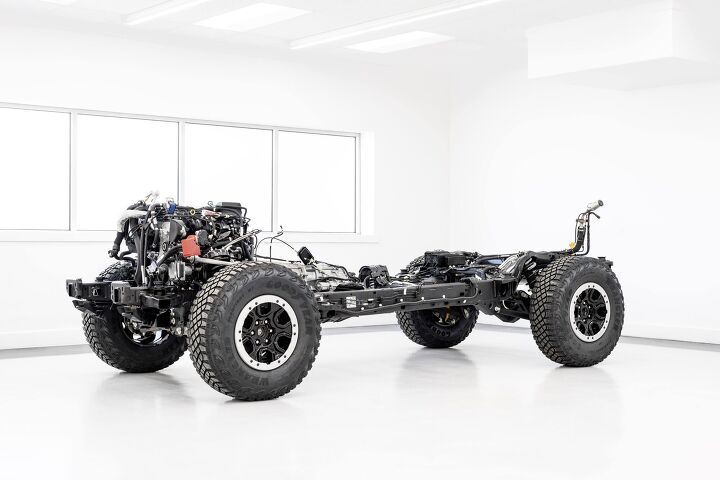




























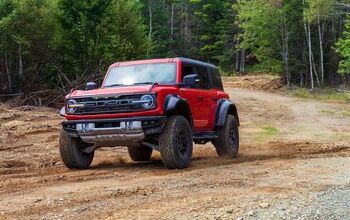

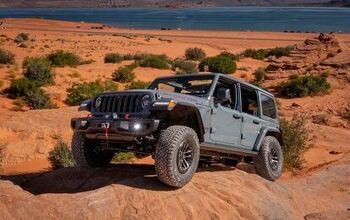
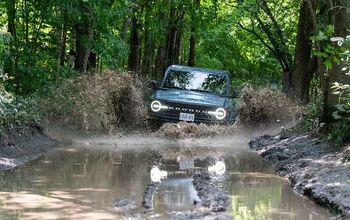



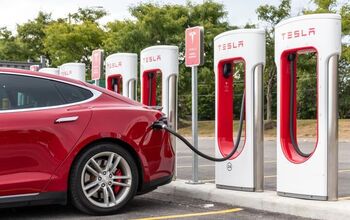
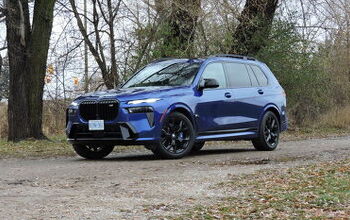



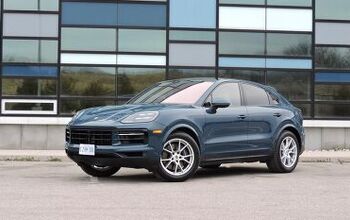

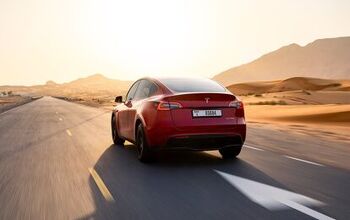
Comments
Join the conversation
I take it the only comment I guarantee u have not had the chance to drive Bronco the ride on my 22 wildtrack 2dr in eruption green 35's all the toys As a daily driver it has a vastly superior ride quality than the Jeep I I have owned both and driven hundreds of wranglers If you're going to use it as a daily driver the Bronco crushes a Jeep for ride quality My wild track is designed for high speed off road driving and is incredible on snowy highways at 70 miles an hour everybody else is doing 20 and I can do 70 and be perfectly stable And you don't feel like you need to scrap on a kidney belt like you do a jeep The Bronco Tudor rides very similar 2 A F150 raptor very similar ride quality I was able to take my Bronco on an entrance ramp to the highway somebody got stuck at the bottom from deep snow I just went over the edge and down the embankment and onto the freeway no issue is whatsoever and there is well over 20" of snow and 10" was fresh It would be a pretty tough feet to get that thing stuck One of the most capable 4 by 4 is I've ever driven and I've driven a lot I ran automotive dealerships for 22 years I've had the opportunity to drive and spend time in just bone anything you can imagine that's normal I used to think it was like one of the land rovers We're the best off road vehicles Incredibly unreliable need to buy 2 to drive one with once in the shop but they can go anywhere as well However the build quality reliability factor and cost of maintenance and repairs are astronomical and extremely poor I've only got about 5000 miles on my Bronco And I don't have a single complaint yet However I wouldn't pay 10 grand over sticker If you take your time and don't mind driving someplace to get your truck you can get it at msrp maybe a little bit less I ordered mine via employee purchase it still took 2 years and I didn't get every piece of equipment I wanted had to eliminate some options so if u see a 2dr with trailer tow and it's a 22 odds are its aftermarket Is so Caviot emptor
Thank you for your comments...I have a 2015 Jeep Wrangler Rubicon 2 door and have had my 2 door Bronco on order for almost 12 months now...I have been debating at passing up my Bronco order and let the dealer sell it...or keep my Jeep...which I love!!! 95% of my driving is on road...so I am probably going to get my long waited Bronco...your comments helped a lot!!! Thank you so much!!!